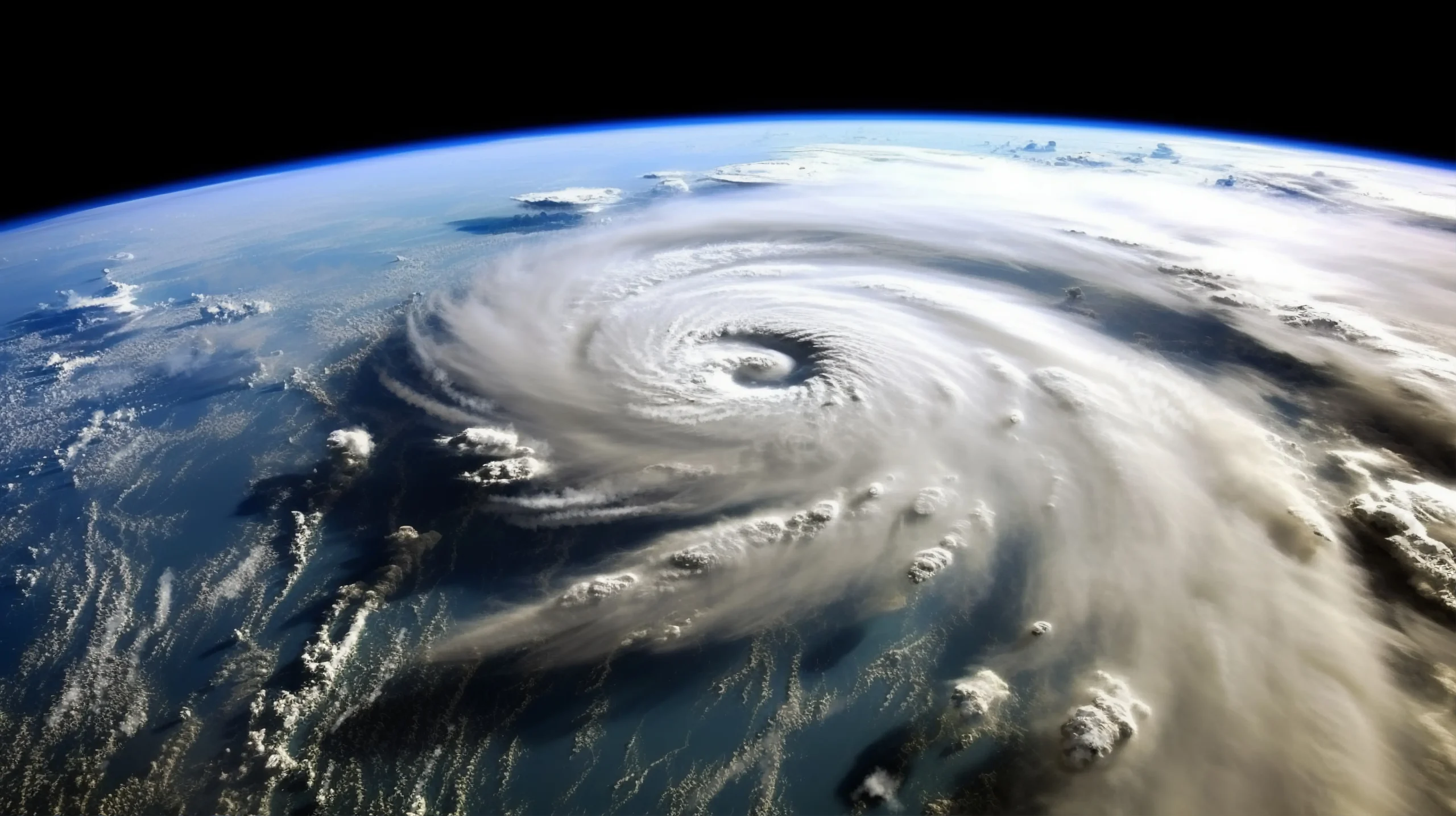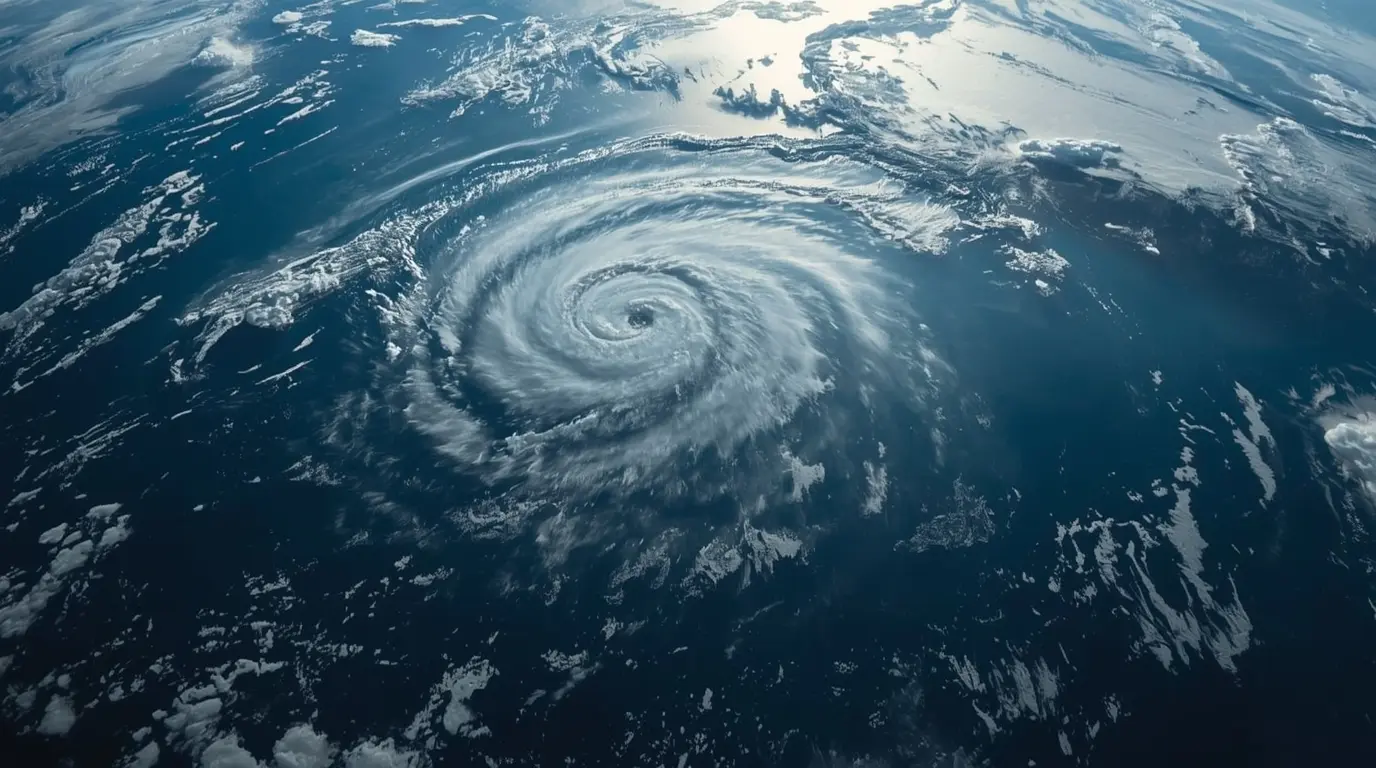As Typhoon Kajiki approaches the central coast of Vietnam, the country, is beginning to prepare one of the most extensive evacuation efforts in modern history. The storm is poised to reach winds of 166 km/h (103 mph), drawing comparisons to Typhoon Yagi from last year, which devastated parts of the country. The state has already issued mandatory evacuations, shut down vital infrastructure, and allocated military personnel to combat the situation. This latest turn of events has brought to light the relentless number of tropical storms in the area, emphasizing the need to focus on climate preparedness and infrastructure resiliency.
The Imminent Threat: Typhoon Kajiki’s Path and Power
Earlier on Sunday, Typhoon Kajiki caused the island of Hainan to experience downed trees and heavy rainfall; now, it is expected to make landfall in Vietnam’s coastal provinces of Thanh Hoa and Nghe An. With winds of 166 km/h, it is already being classified as a weak category 2 hurricane. After over a week of intensification in the South China Sea, it is expected to make landfall as a strong tropical storm or a weak typhoon.
In the case of Typhoon Kajiki, meteorologists believe the storm will weaken slightly due to the upwelling of cooler deep ocean waters, but this certainly doesn’t mean that the storm won’t pose a serious problem to the already at-risk coastal regions. The Joint Typhoon Warning Center predicts Typhoon Kajiki will lose strength while over land, but will still be at tropical depression strength come early Tuesday. Either way, the storm still possesses extreme danger in its path and the possibility for widespread destruction.
Mass Evacuations: A Race Against Time
Authorities in Vietnam have commenced mass evacuations due to the incoming Typhoon Kajiki. The numbers are overwhelming, over 40,000 people have already been evacuated from low-lying coastal communities, and plans are in motion to relocate another 586,000 people from central provinces like Thanh Hoa, Quang Tri, Hue, and even Danang.
In recent history, this evacuation effort can be classified as one of the most impactful disaster preparedness operations. Citizens have been instructed to remain indoors from 11 a.m. to 6 p.m. local time on Monday and soldiers have been assigned to aid with the evacuation. Over 16,500 soldiers as well as 107,000 paramilitary personnel have been deployed to aid in the evacuation and are on standby for search and rescue missions.
Infrastructure Closures and Economic Consequences
Vietnamese officials have made the decision to suspend operations at the schools, airports, and businesses in the impacted regions in preparation for the oncoming Typhoon Kajiki. In addition, the Thanh Hoa and Quang Binh airports have been closed, as reported by the Civil Aviation Authority of Vietnam. Due to the approaching typhoon, Vietnamese carriers such as Vietnam Airlines and Vietjet have cancelled or rescheduled numerous flights.
The economic impacts of Typhoon Kajiki could be extremely problematic. The storm poses a threat to a number of electronics makers with factories located close to Vinh, which include Apple Inc. suppliers Hon Hai Precision Industry Co., Luxshare Precision Industry Co., and GoerTek Inc. The government has issued warnings of Typhoon Kajiki predicted to impact mountainous regions further inland with possible flooding and landslides which could disrupt the supply chains and agricultural output.
Officials have likened Typhoon Kajiki to Typhoon Yagi which struck the nation last year, resulting in the loss of around 300 lives and inflicting nearly $3.3 billion in damages. While Typhoon Kajiki is somewhat weaker than Yagi, which made landfall as the equivalent of a Category 4 hurricane, it still poses a significant threat to infrastructure, factories, and farmland.
Effects of Typhoon Kajiki on Hainan Island
Typhoon Kajiki on Vietnam’s border went south to Hainan Island and Guangdong on China’s southern Coast. China’s southernmost resort Island Sanya and it’s Hainan island facing ‘ on the beaches of the South China Sea closed restaurants, suspended buses, and halted public transport.
Hainan Island was exposed to heavy winds and rains while motorists and people on the Sanya sidewalks could see strong gales ripping trees and power poles. Videos from Sanya showed trees toppling onto cars and people. While walking and motor biking people were blown down under trees while holding onto phones.
In the morning of the same day, the city went on the highest possible alert level s8. Power outages had people stuck in the city’s tourist centers during downpours and electric buses were not working. This captures exactly why Sanya is the worst tourist destination to end up on holidays to.
Warnings and Projected Damage
Prime Minister Pham Minh Chinh of Vietnam has issued a warning that Typhoon Kajiki has the potential to cause significant coastal flooding and landslide flash floods, especially in the coastal low-lying regions. In conjunction, the government also emphasized in the statement, “this is an extremely dangerous fast moving storm,” highlighting its risk.
Concerns about rainfall totals have also sparked the issuance of warnings from meteorological agencies. Some areas are forecasted to get between 200 to 400 millimeters of rainfall, while others are estimated to surpass 600 millimeters. As the storm progresses, China’s Meteorological Center stated it will trigger heavy rainfall in 13 northern and central provinces of Vietnam, Laos, and Thailand, accompanied by a surge in the potential for flash flooding and landslide mudslides.
Reports suggest storm surges could reach as high as 1.5 meters, with some regions also projected to have sea levels exceeding 3.5 meters. In regions where the sea level is lower, the risk of flash flooding and storm surge is heightened. In lower-lying coastal areas, the BBC has reported that a surge of 2-4 meters (6.6-13ft) is anticipated, further worsening the flooding forecast.
Mobilizing the Military and Emergency Preparedness
Vietnam has committed extensive military resources to addressing the threat of Typhoon Kajiki. Over three hundred thousand military personnel were activated along with the Navy, Coast Guard, and Air Force, which were on standby to conduct rescue operations. The government’s response to the storm clearly reflects how seriously it is treating the situation.
Some of the emergency protocols activated in the country’s central provinces include plans for the potential evacuation of hundreds of thousands of civilians, a fishing ban, construction of secure fencing on dams and flood walls, and locking floodgates. Seven coastal provinces in Vietnam additionally banned boat departures. They recognized the situation stating, “it is extremely dangerous and not safe for any vehicles or structures, including tourist and fishing vessels and aquaculture raising facilities.”
Connections Between Climate and Future Projections
The growing concern regarding the impact of climate change with the increasing severity of storms, like Typhoon Kajiki, is widely raised. Storms and floods, especially in tropical regions, tend to be destructive. Scientists warn that climate change is a human problem and it indeed has the potential of causing worse weather storms.
Vietnam faces severe impacts from disasters caused by weather changes. In the first seven months of the year 2025, over 100 people were reported dead or missing due to natural disasters, with the economic cost surpassing $21 million. These events have increased the calls looking to improve the responsiveness of the infrastructure to disasters and adapt to climate changes.
Looking Ahead: The Path Forward
Currently, the foremost priority is to safeguard people and reduce damage to property as Typhoon Kajiki nears the coastline. As always, there is some uncertainty involved with weather systems; however, the extensive preparations and evacuations show how hard earned the experience of dealing with tropical storms is for Vietnam.
If Typhoon Kajiki is anything like Yagi, then the aftermath is going to need a lot of international aid and support for recovery. The people who have been affected by the typhoon will have their resilience tested, but due to the comprehensive preparation efforts, the worst impacts are likely to be mitigated.
Source: https://edition.cnn.com/2025/08/25/asia/vietnam-typhoon-kajiki-landfall-intl-hnk
For more incredible stories of everyday news, return to our homepage.




